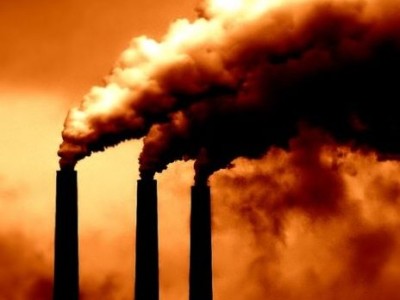Airpocalypse Now: China’s Tipping Point?
The recent run of air pollution in China, we now know, has been worse than the air quality in airport smoking lounges. At its worst, Beijing air quality has approached levels only seen in the US during wildfires.
All of the comparisons to London, Los Angeles, and New York in the last century are beside the point. Air pollution at these concentrations constitutes a public health emergency. Fine particulate (PM2.5) concentrations of 250 µg/m3 are considered emergency levels. This past month, air pollution in Chinese cities has regularly been two, three, even four times this emergency threshold (and up to 40 times levels the WHO considers healthy). In the worst cases, people are literally dying from this pollution. And PM2.5 is only the tip of the iceberg. China’s air is brimming with a heady mix of sulfur dioxide, nitrogen oxides, ozone, lead, mercury, and other assorted pollutants.
The recent “airpocalypse” is just the latest in a long series of environmental disasters in China that have the world wondering whether a tipping point is imminent. Will it be China’s equivalent of Rachel Carson’s Silent Spring in the US (or the Minamata mercury poisoning cases in Japan, or the Great Smog of 1952 in the UK)? That is, a catalyst for genuine environmental change?
My own view is that China’s tipping point, in a sense, already arrived a few years ago. But the official response has been wholly inadequate to the task. Fundamental weaknesses in the way that China has approached its environmental protection efforts mean that the environmental crisis has continued to run amok.
What do I mean exactly? I set forth my theory in greater detail in a forthcoming article in the Harvard Environmental Law Review, but here are a few highlights:
- The Moment. In 2006, the Chinese leadership established a number of key environmental performance targets for energy efficiency and pollution reduction. While these targets are well-known, less recognized was the dramatic elevation of the priority of these targets, making them important criteria in the job evaluations of local government leaders across the country. This had never before been the case.
- Why It Has Not Worked #1. The fundamental problem was that the main targets were not linked to environmental quality outcomes. Rather, credit for pollution reduction might be granted, for example, for the construction of a wastewater treatment plant or installation of pollution control technology in a power plant. So local officials were incentivized to invest in environmental infrastructure, and they happily obliged – engaging in a binge of investment in pollution control technology. But there was much less focus on whether these investments were operated properly such that they actually reduced pollution.
- Why It Has Not Worked #2. Finally, China has faced the same problems with gaming of targets that arise anytime hard targets are coupled with insufficient monitoring. Outside of China, we have seen this in the context of policing targets, school testing, and college rankings, just to name a few. In China, we now know that factories adjusted pollution control equipment to report false data, treatment plants were left idle, local governments forced emergency shutdowns of electricity to local public services (like hospitals) to meet energy efficiency targets, and so on.
The risk of China already having initiated substantial top-down action on the environment is that some officials will focus on the actions taken, rather than China’s actual environmental performance. Last year, a Chinese bureaucrat famously asked the US Embassy to stop public disclosure of air quality information because it “took credit” away from steps Chinese regulators had taken. But, Chinese citizens don’t care that China has installed an unprecedented number of flue gas desulfurization units in power plants. They care about clean air.
Fortunately, the initial response to the “airpocalypse” shows some promise. China’s newfound transparency in air monitoring and media coverage has been breath of fresh air, so to speak. Beijing has also moved relatively quickly on short-term emergency measures, such as limits on coal burning and vehicle use.
Yet, China’s problems are so vast and its growth so explosive that its first environmental tipping point, in a sense, requires another tipping point of its own to force necessary implementation reforms.
So, what’s to be done? Here are a few thoughts:
- Establish hard targets for environmental quality outcomes against which governors and mayors are held strictly accountable.
- Announce harsh penalties to deter the inevitable impulse toward falsification of data. Offer substantial rewards for meeting performance targets.
- Expand environmental transparency to empower the public to better “supervise the government.” Environmental regulators are simply not powerful enough to monitor and withstand pressure from growth-oriented governments and corporations without this public support.
- Accelerate nascent efforts to increase the use of cleaner energy (natural gas, renewables) and improve energy efficiency, which have benefits for the economy and the environment.
- Rinse and repeat. Make this a long-term campaign of continuous environmental improvement that lasts beyond the current wave of media attention.
This entry is cross-posted from the ChinaFile.com blog, which also includes related commentary from Orville Schell, Elizabeth Economy, Sam Geall, Michael Zhao, James Fallows, and Deborah Seligsohn.
Reader Comments
2 Replies to “Airpocalypse Now: China’s Tipping Point?”
Comments are closed.







Great post, thanks Alex!
Great post, thanks Alex!